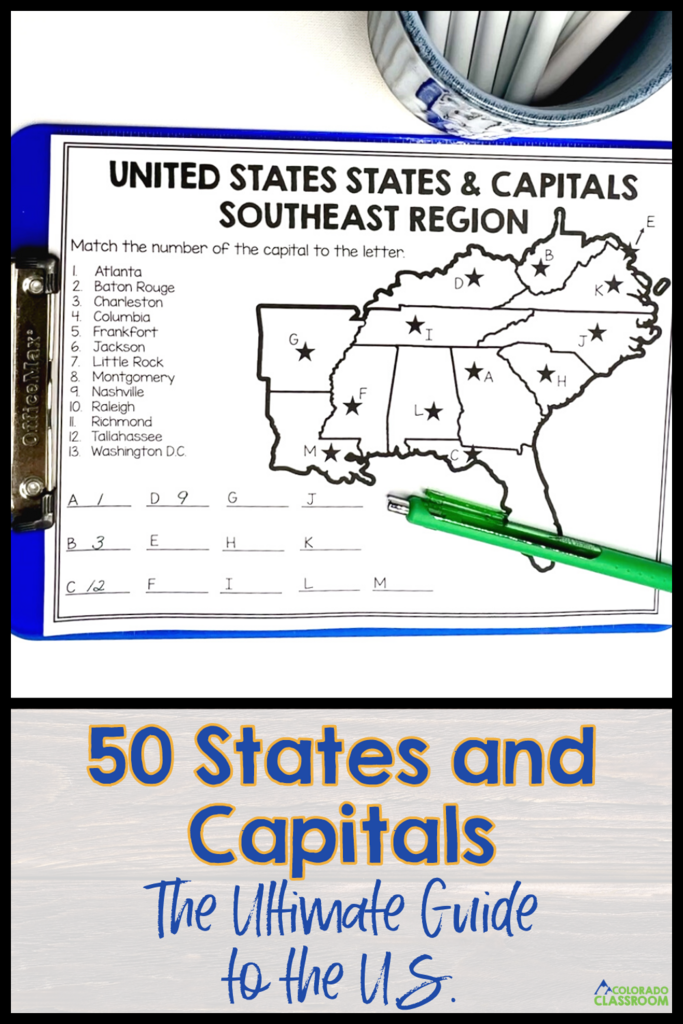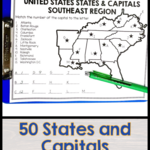The Ultimate Guide to Teaching U.S. States and Capitals
We all have that one unit that might not light up our excitement radar when we open our curriculum maps to see what’s next. The unit may even feel a tad tedious – both for us and our students. For some of us, that unit is teaching states and capitals. But you know what? Teaching the 50 states and capitals of the United States doesn’t have to be just memorization. We can give our explorers the keys to unlock the map of their own country in a fun and engaging way.
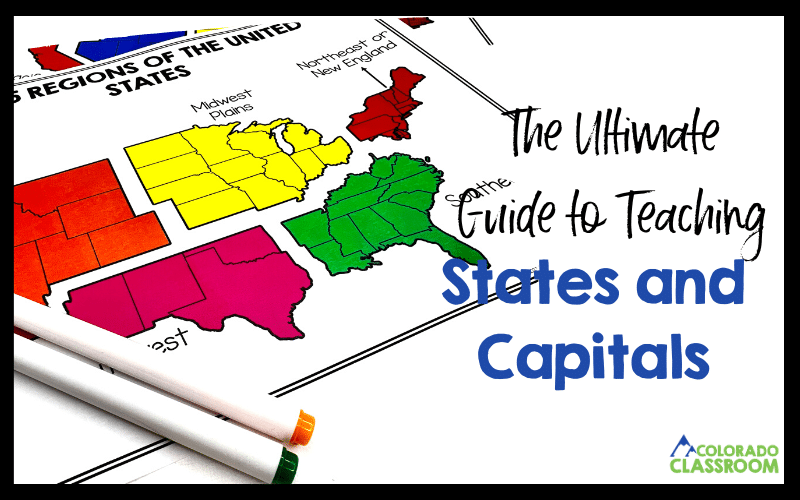
Why Teaching the 50 States and Capitals is Important
Teaching states and capitals is not just about memorizing names and places but fostering a deep connection to the nation, their home. Hopefully, it will ignite their curiosity about different cultures and histories as they learn about each one. Their geographical minds open up to understand the vastness of the country and how different regions vary. An added bonus is that it helps them develop map-reading skills as well!
But here’s the scoop – we need the right tools to make this educational adventure a blast. Curriculum standards may evolve, but I’ll introduce you to a resource bundle that’s jam-packed with fun and educational goodies, perfect for igniting a lifelong love for American geography in your students.
Enhancing Geographic Literacy with the U.S. States and Capitals
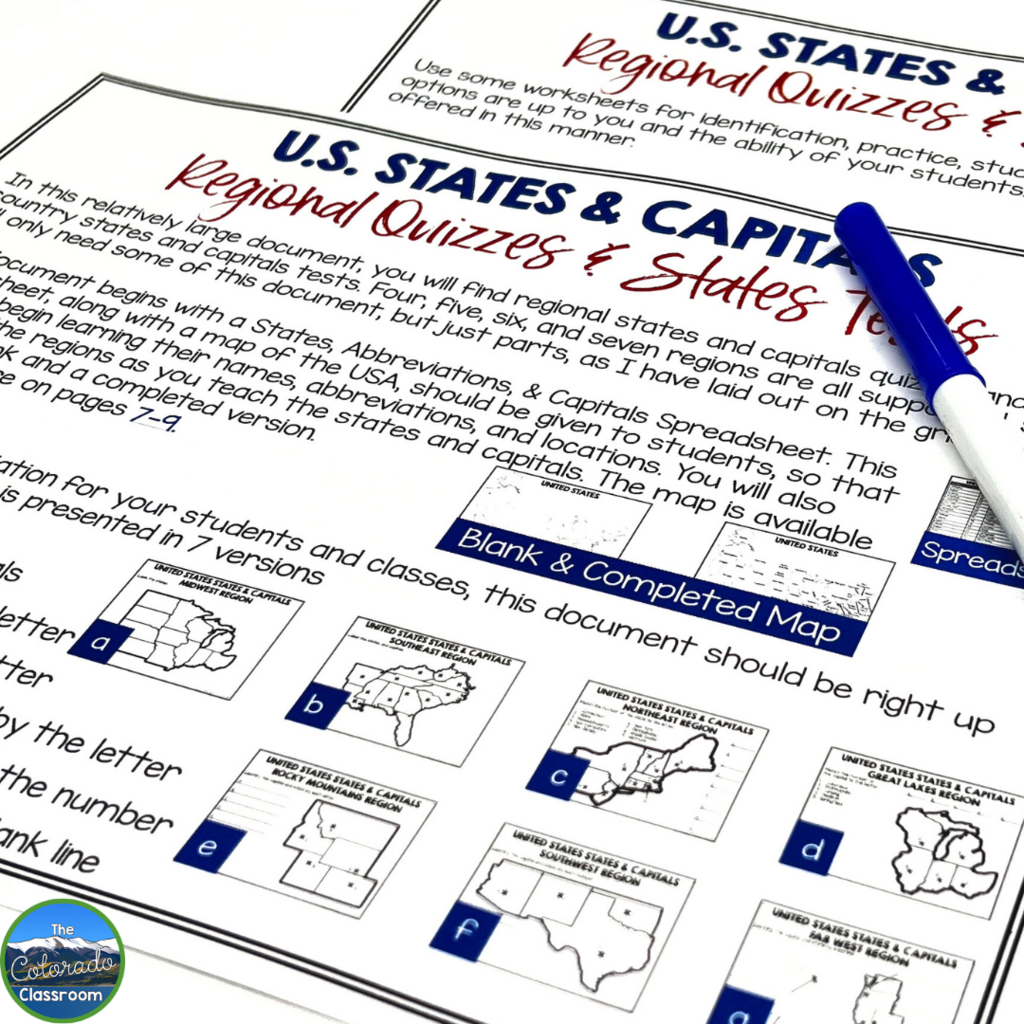
Teaching the U.S. states and capitals is not just about rattling off names and places. It’s about setting our future citizens up for success by helping them become familiar with our national geography.
When our students know where each state is on a map, it builds their knowledge of the country they live in and deepens their understanding. After all, it’s hard to get excited about specific states and cities when you can’t visualize where they are or what they’re like!
This basic skill is their ticket to deeper conversations about the fascinating world of regional quirks, cultures, and interesting bits of history. So, let’s get them started on this epic journey!
Building a Personal Connection
Teaching students about the 50 states and capitals is much more than simply throwing facts at them. It’s more about sparking that “Aha!” moment where they feel a special bond with their nation.
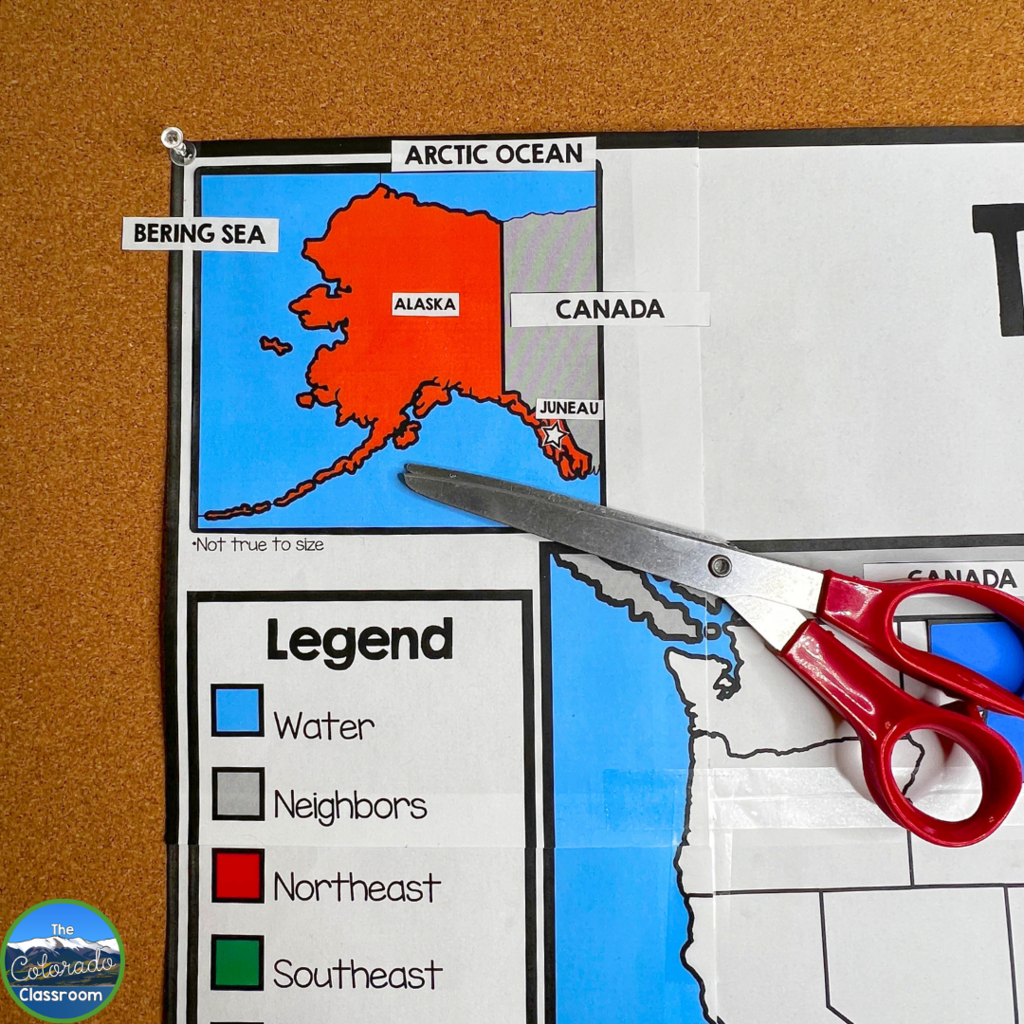
Something magical happens when our kids dive into the fascinating tales of each state’s history, culture, and quirky symbols.
They start to see their own reflection in the mosaic of the United States. They begin to build a personal connection, like finding pieces of a puzzle that fit perfectly into their sense of identity and pride.
By understanding what makes each state tick, our students become the storytellers of their country’s incredible diversity. They can wave their own state’s flag a little higher and walk with a bit more pride because they’ve discovered the nation’s rich tapestry.
This is a gift that we, as teachers, get to instill in our students. This is our opportunity to help raise patriotic learners with a sense of pride and respect for their nation as a whole!
Unleashing Cultural Explorers through the 50 States and Capitals

Let’s talk about how teaching the 50 states and capitals turns our students into cultural explorers!
The United States is a buffet of cultures, histories, and traditions. When we introduce our young learners to the states and capitals, we take them on a grand adventure through the country’s diverse cultural heritage. From the jazz-filled streets of New Orleans to the towering skyscrapers of New York City, there’s a whole world waiting to be explored right in our own nation.
By knowing the states and capitals, our students are detectives piecing together the historical puzzle of America. They start to connect the dots and understand how the past influences the present.
Each state brings its own unique flavor to the national tapestry. Our kids learn to appreciate the unique contributions of each state, making them true connoisseurs of American culture.
Skills for Life
Teaching states and capitals involves more than meets the eye.
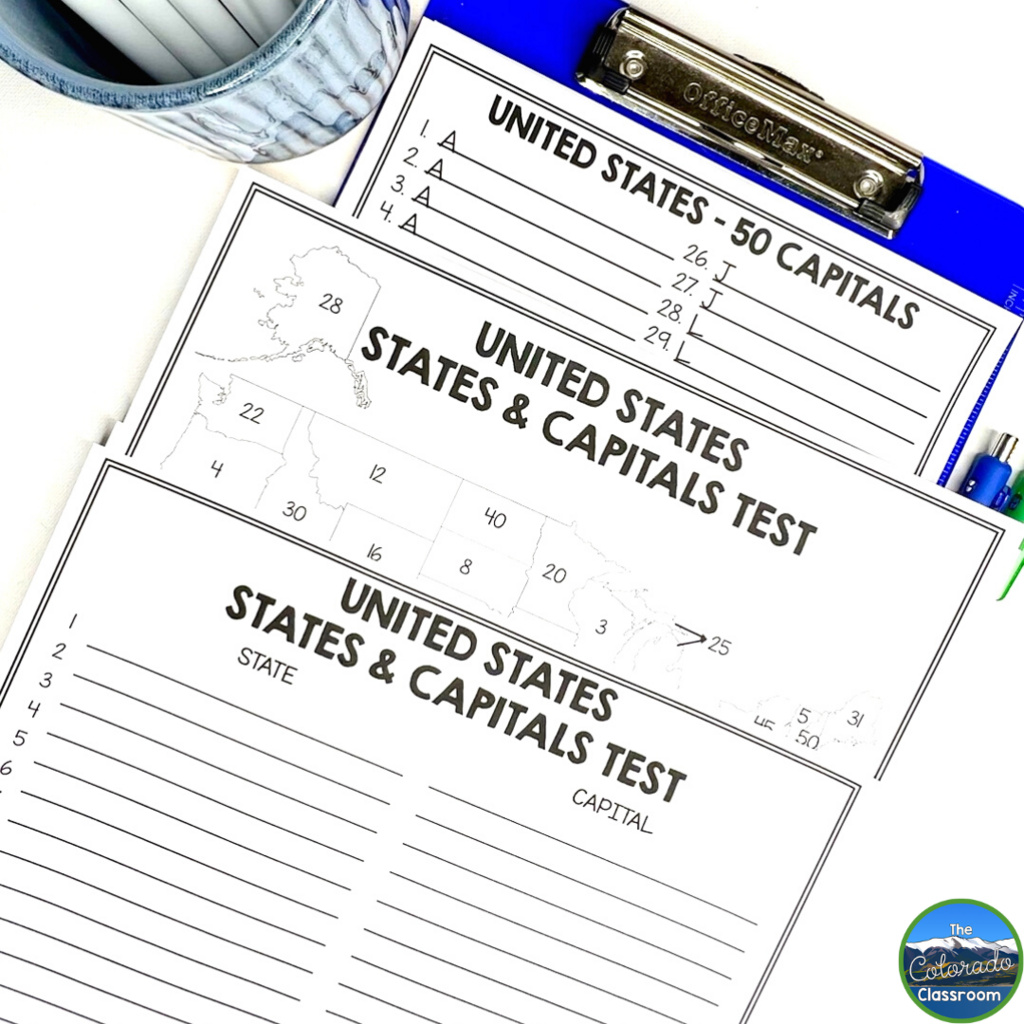
First off, there’s the memory muscle. By tackling all those state names and their matching capitals, our young champs become memorization pros. But there’s more to the story.
As they navigate the geographical maze, they’re also becoming ace problem solvers. Figuring out where each capital belongs on the map is like solving a giant puzzle. Problem-solving is a superpower. It’s not just about maps, but a skill they can use in school, work, and life.
And last but not least, let’s not forget the map-reading magic. Reading maps becomes second nature when our students know their states and capitals. They’re mastering a secret code that can unlock all kinds of doors in various academic and professional settings!
50 States and Capitals Bundle of Resources
I have a highly beneficial toolkit that’s here to make your teaching adventure a whole lot easier. I’ve whipped up a comprehensive 50 States and Capitals bundle of resources that fits all the nooks and crannies of your curriculum and standards! There is so much packed into this bundle that whether you move schools, grade levels, or are faced with changing standards, this bundle will still apply. It’s a treasure chest for educators teaching U.S. states and capitals.

Inside this magical bundle, you’ll find a whole selection of resources at your fingertips. We’re talking about an exciting mix of activities to keep your teaching game strong, from interactive maps to quizzes, worksheets, and more.
The best part? You’ve got the power to choose the tools that work best for your unique teaching style and your student’s needs. This bundle’s got your back no matter what standards you’re rolling with or the grade levels you’re working with. Let’s dive in and explore how this resource bundle can level up your teaching game!
Key Parts of Resource Bundle
The resource bundle covers the states and capitals and includes information about the regions of the United States, state abbreviations, symbols, flags, mottos, and more. With quiz games, task cards, tests, slideshows, and other resources, the bundle offers a wide variety of teaching tools to keep students engaged and motivated.

- Flashcards: These visual aids help students memorize state names and capitals in an engaging way.
- Task Cards: Task cards provide interactive opportunities for students to practice their knowledge, making learning fun and engaging.
- Maps and Interactive Maps: Maps are essential tools for teaching geography. Interactive maps make learning more immersive and interactive.
- Worksheets: Worksheets are perfect for reinforcing knowledge and assessing students’ understanding.
- Quizzes and Tests: Regular assessment is crucial to measure progress, and this bundle includes quizzes and tests to help you do just that.
- Slideshows: Slideshows are useful for presenting information in an organized and visually appealing manner.
- State Abbreviations, Symbols, Flags, and Mottos: These resources help students gain a deeper understanding of each state’s identity.
You can use all of these resources and teaching tools in their traditional manner to support your lesson plans. But. . . you don’t have to! Check out 5 engaging and interactive ways to use these resources to add new life to your states and capitals lessons.
5 Engaging Activites to Bring to Life the 50 States and Capitals!
1. Geography Olympics Challenge:
Transform your classroom into a spirited arena with the “Geography Olympics Challenge.” Divide your students into teams and let the excitement unfold as they navigate through the States and Capitals Quiz Game. The game covers a range of topics, from regional details to state abbreviations, making it a comprehensive challenge. Keep the competition lively by using the interactive wall map as a scoreboard. Each team can choose a state to represent in the challenge. This activity reinforces geographical knowledge and fosters teamwork and a sense of accomplishment. Watch as your students become geography champions in this thrilling and interactive learning experience.
2. Task Card Scavenger Hunt
Ignite the spirit of discovery with a task card scavenger hunt. Hide task cards related to specific regions or topics around your classroom, and let your students embark on a detective mission. As they search for and solve task cards, they’ll tackle a variety of challenges, from labeling states to matching abbreviations. This interactive scavenger hunt adds an element of excitement to the learning process. It encourages students to explore and engage with the material in a hands-on way. It’s a creative and enjoyable approach to reinforce key concepts while keeping the energy high in your classroom.
3. Memory Madness Game
Turn memorization into a fun and competitive experience with the “Memory Madness Game.” Utilize the State Name and Outline Memory Game to challenge your students’ memory retention skills. Whether you turn it into a class-wide competition or set it up as a center activity, students will match state names to their outlines in a playful and engaging manner. This game enhances memory recall and introduces an element of friendly rivalry, making learning a memorable experience!
If you play as a whole class, I like to add a little twist by playing a silent game. This helps to eliminate the little noises and gasps that can cause someone to change their mind on which cards to pull. You will be amazed at your student’s engagement during a silent activity.
4. Symbols Show-and-Tell
Dive into the rich symbolism of the United States with the “Symbols Show-and-Tell.” Turn this into an interactive session where students learn about state symbols and create their own visual representations. Assign each student a state to research and complete the state mini-book available in the States and Capitals Symbols Slideshow and Workbook. Once done, it’s time for Show and Tell! Encourage them to showcase their creations to the class, promoting creativity, research skills, and public speaking. This activity adds a personal touch to learning about the country’s symbols, fostering a deeper connection and understanding of the cultural significance behind each one.
This is a great activity to connect with technology skills. If your students have a computer class, you might even pair up with that teacher to have them work on it in the computer lab.
5. United States History Journey
Embark on a captivating journey through U.S. history with the “United States History Journey” activity. Utilize the “History of the United States and the Race to a Nation” slide show to explore key historical events that shaped the country we know today! Start out as a whole class by watching the slideshow and taking notes while it shows the states being added. Then, pair your students with partners and give them the challenge to bring the timeline to life by creating a class-wide visual display or timeline.
If you use this at the end of your unit, students could use all the other information they learned about that state or region that the state is in. This hands-on approach to history enhances historical understanding and encourages collaboration, research skills, and creative expression. Your students who love drawing and creative learning are going to LOVE this!
Ready to Travel Through the 50 States and Capitals?
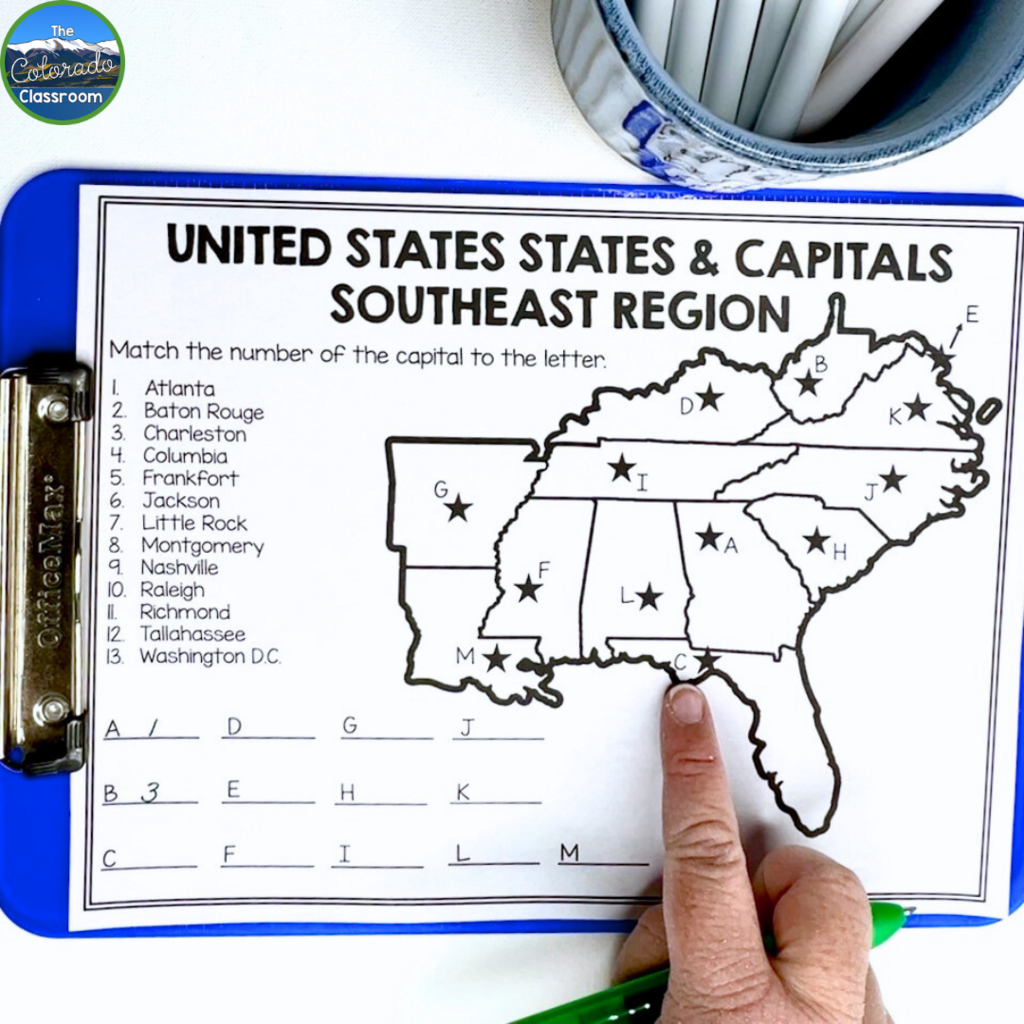
Teaching the 50 states and capitals isn’t just another lesson in the curriculum but an exciting journey into our country. It’s about fostering geographic literacy, connecting our students to their nation, promoting cultural awareness, and equipping them with skills for life.
With the comprehensive resource bundle I’ve unveiled, I’m handing you a set of tools that are as adaptable as they are indispensable.
Let’s embark on this adventure together. We can empower our students with the knowledge and skills they need to navigate the diverse landscape of the United States.
It’s an investment in their future and a celebration of the rich tapestry that is our nation.
Looking for more U.S. History or Geography resources? Check out this post and apply it to any or all states you are learning about.
Save for Later
Remember to save this post to your favorite Social Studies Pinterest board for when it’s time to study the 50 states and capitals!
